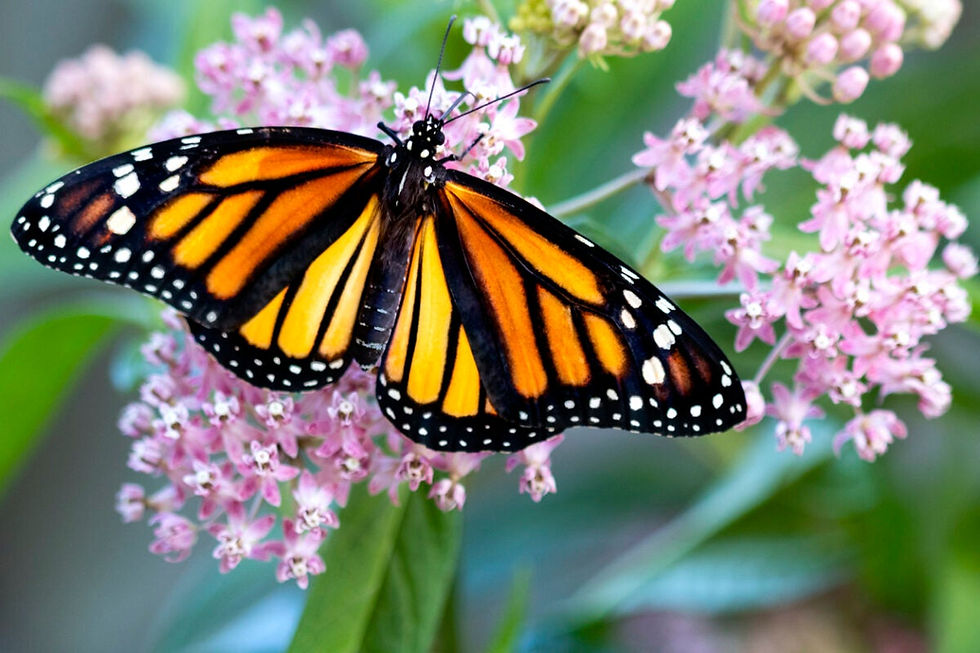Butterfly Gardens With Medicinal Plants
- blackcoralinc2021
- Mar 28, 2023
- 3 min read

Butterfly Garden Medicinal Plants
1. Dandelion
Uses: Traditionally, the root of the dandelion has been used to make a tea that was used to treat liver, kidney, and bladder ailments. It can also be used as a tonic for digestive problems or constipation. If the root is dried, it can also be used as a weak coffee substitute. Recent experiments have shown that the root is hypoglycemic and can be used as a weak antibiotic against yeast infection. The leaves and flowers are also rich in vitamins A and C. All parts of the flower can be used as food.
2.Black Eyed Susan
Uses: the plant has been found to have immuno stimulant activity similar to Echinacea. Native Americans also used the root tea for colds and an external wash for sores and swelling. North American wildflower that's excellent for attracting butterflies, bees, and other pollinating insects. A late-summer bloomer, black-eyed Susan is invaluable for adding lots of bright color to late-summer and autumn gardens.
3. Milkw

eed
Uses like: tea made from the milkweed root is an expectorant, diuretic, and can induce sweating
Warning: milkweed contains cardioactive compounds Milkweed is the cornerstone of a successful butterfly garden and planting a mix of both native whorled milkweed and non-invasive annuals like purple milkweed will entice the New England monarchs to enter your garden . Milkweed varieties are utilized as both host plant for caterpillars and a nectar source for butterflies.
4. New England Aster
The New England Aster has an affinity for both the upper and lower respiratory system. It is said to be decongesting, antispasmodic, and relaxing to the lungs (mcdonald, n.d), and it is particularly useful for seasonal allergies and colds as well as for cases of acute and chronic asthma.The aster is particularly attractive to the Pearl Crescent butterfly since they will lay their eggs on the plant to feed their caterpillars. These are one of the great garden plants that serve as both a host plant and a nectar plant for the butterflies.
5.Bee Balm
Today, bee balm is still used as an herbal remedy for a variety of ailments. As a member of the mint family, when bee balm is used in teas, it can help with digestive issues, bloating, sore throats, and nausea. Bee balm is a natural antiseptic and applied topically, can help with bee
stings, rashes, and minor wounds
6.Catmint
Much like other herbal teas, catmint herbal tea can aid digestive problems such as upset stomachs, excessive gas, diarrhea, menstrual cramps and nausea. It's also good for respiratory problems such as persistent cough, and chest congestion. Butterflies are fiercely attracted to catmint. This herbaceous perennial will take over the garden if not kept contained, so plant this lovely herb in a pot and then bury the pot into the ground up to the rim.
7.Floss Flower This old-fashioned heirloom has clusters of puffy flowers that are attractive to many species of adult butterflies. Exceptionally long blooming low-maintenance plants are useful in containers or beds. has broad biological activities, including antifungal, antibacterial, and antimicrobial activities. It has been used for treating pain and infections, especially for healing of external wounds and skin diseases.
8. Verbena
One of the best flowering plants for attracting a wide range of butterflies, shrub verbena blooms continuously during the time of year when adults are most active. Cabbage white, monarch, red admiral, skippers, and swallowtails are just a few of the many different butterflies that will feed on the delectable flowers. Verbena extract may benefit certain neurological or brain-related conditions. The studies explain that the compound promotes the development of new blood vessels in the brain — which supply it with oxygen — and improves its mitochondrial function. Promisingly, studies show that verbena may also protect against antibiotic-resistant bacteria and fungi.
9.Lavender
Aromatherapists use lavender in inhalation therapy to treat headaches, nervous disorders, and exhaustion. Herbalists treat skin ailments, such as fungal infections (like candidiasis), wounds, eczema, and acne, with lavender oil. It is also used in a healing bath for joint and muscle pain.
10.Chives
Chives are extremely rich in flavonoid antioxidants, which contribute to most of the benefits. These antioxidants help fight cancer, improve heart health, and can even fight inflammation. They also detoxify the body and boost skin health. Bees and butterflies are especially attracted to chives. Chives should be lifted and divided every two to three years to keep the clumps vigorously growing.


Comments